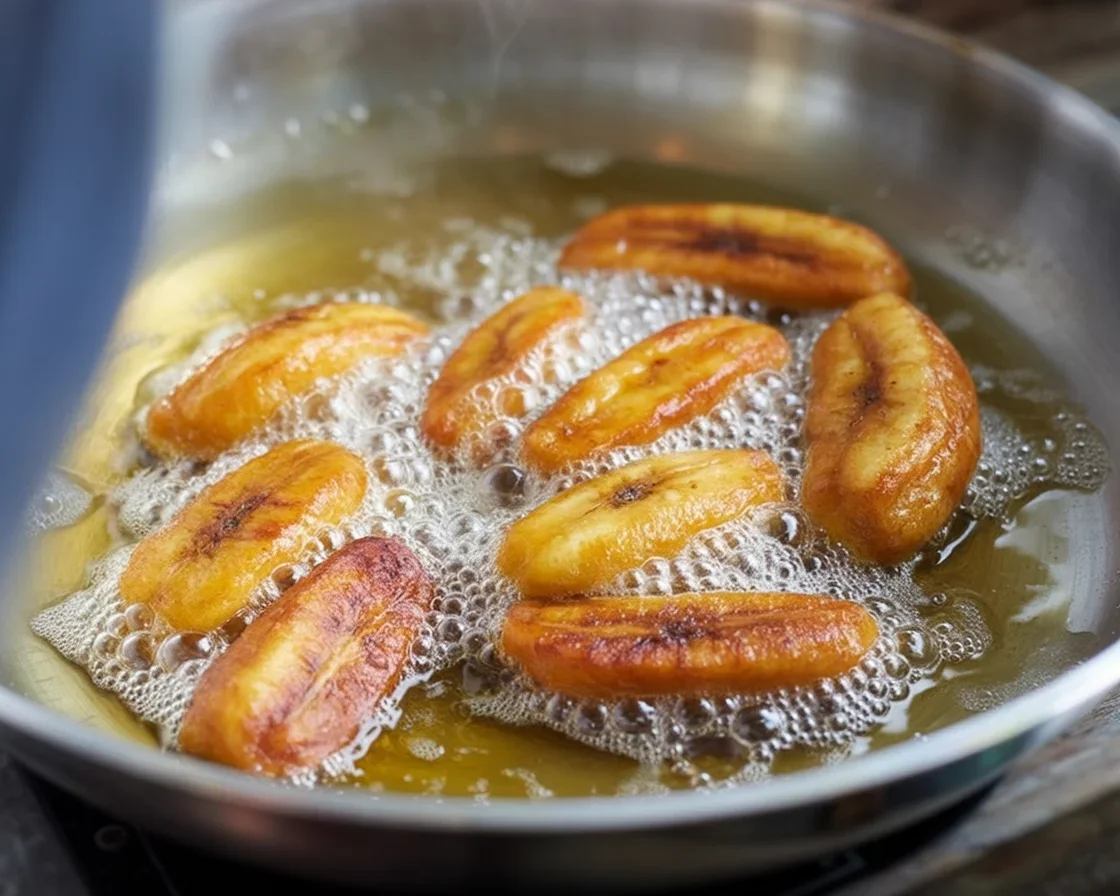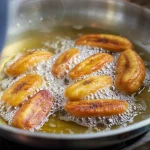banana cue isn’t just a snack. It’s one of those things that lights up street corners all across the Philippines. You know what I’m talking about—maybe you went hunting for street food after school or a long workday, and there it is, sizzling away in a giant wok. Sometimes, you’re just craving something sweet, crunchy, and not fussy. When you can’t decide between a quick lunch or dessert, banana cue comes to the rescue. By the way, if you want to dive even deeper, there’s a classic crispy caramelized Filipino banana cue recipe I tried, and trust me, it’s a winner. Or, if you need some variety but want the same banana atmosphere, check out the Filipino turon recipe for more ideas! 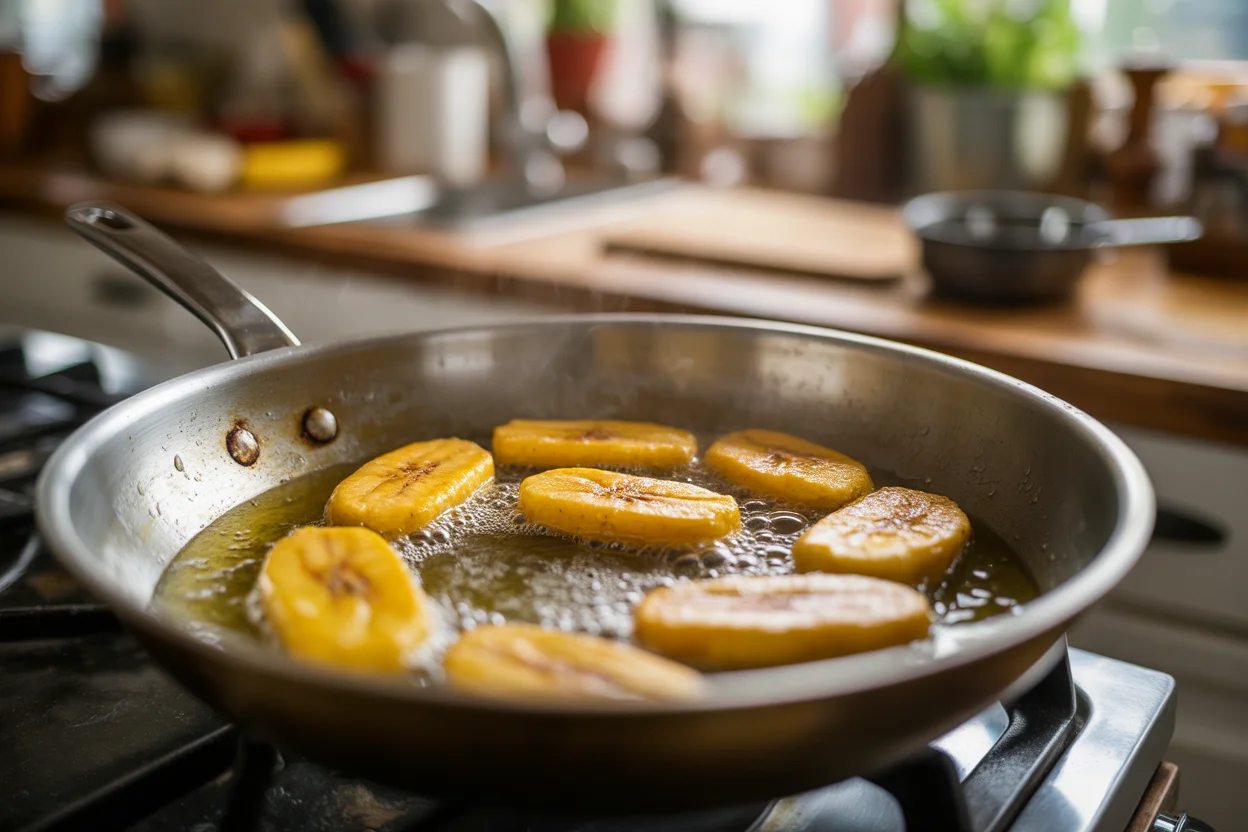
Description of Banana Cue
Let’s peel things back a bit (pun not really intended, but whatever). Banana cue is honestly simple: deep-fried saba bananas coated in caramelized brown sugar, usually stuck onto a wooden stick, and handed to you right off the frying pan. You eat it like a lollipop, but way better, with messy hands and sugar crackling as you bite. That’s the magic.
The star ingredient is saba banana. Not the regular Cavendish ones you put in a smoothie. These are chubbier, starchier, and have a flavor that stands up to frying. Street vendors just fry up whole peeled bananas in hot oil, toss a bunch of brown sugar right on top, and stir until everything gets sticky and golden and a little smoky. The finished banana cue gets speared on bamboo sticks—okay, it’s a bit dramatic, but hey, that’s part of the fun. You don’t get that from a donut. The crunchy caramel shell and the pillowy banana inside? Chef’s kiss.
I can’t help but think of lazy afternoons with friends, all of us fighting over the last stick. You could always tell who got the biggest banana because they looked the happiest, right? Now that I make it at home sometimes, my kitchen smells unreal for hours after.
“Hands down, this is my comfort snack. It makes me feel ten years old again!” – Mira J., Manila
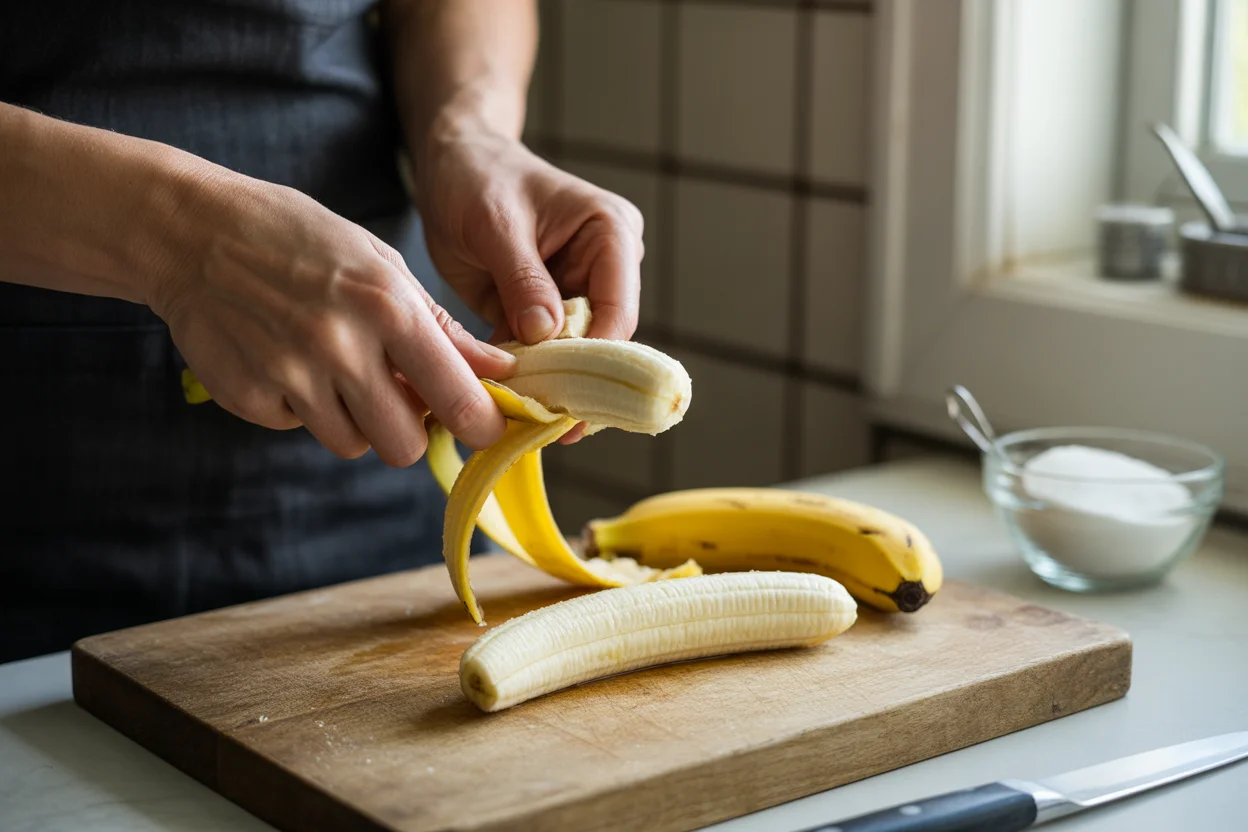
Preparation Methods for Banana Cue
Making banana cue at home isn’t hard. You’ll need ripe but firm saba bananas, brown sugar (the darker, the richer), and just enough oil to make you second-guess your healthy eating plans (kidding! Sort of).
Heat oil in a big pan or wok. Don’t skimp—bananas need space. Once sizzling, drop in the peeled saba bananas. Let them fry for a bit. Then, sprinkle a heap of brown sugar directly into the oil. Watch as it bubbles up and clings to the bananas. Stir everything gently, so the sugar doesn’t burn, and does its sticky magic. If it seems like the sugar’s clumping, just keep the bananas moving.
Honestly, the hardest part is not eating them straight from the pan because, warning, that caramel gets hotter than a summer jeepney ride. Once they’re golden and coated, use tongs to thread a couple of bananas onto each bamboo stick. Set on a tray to cool, if you have the patience for that part. Some people roll them in extra sugar, but I’m just saying—that might knock your sweet tooth out for the day.
I’ll admit, I’ve burned myself a few times. That’s just part of chasing after street food authenticity at home. 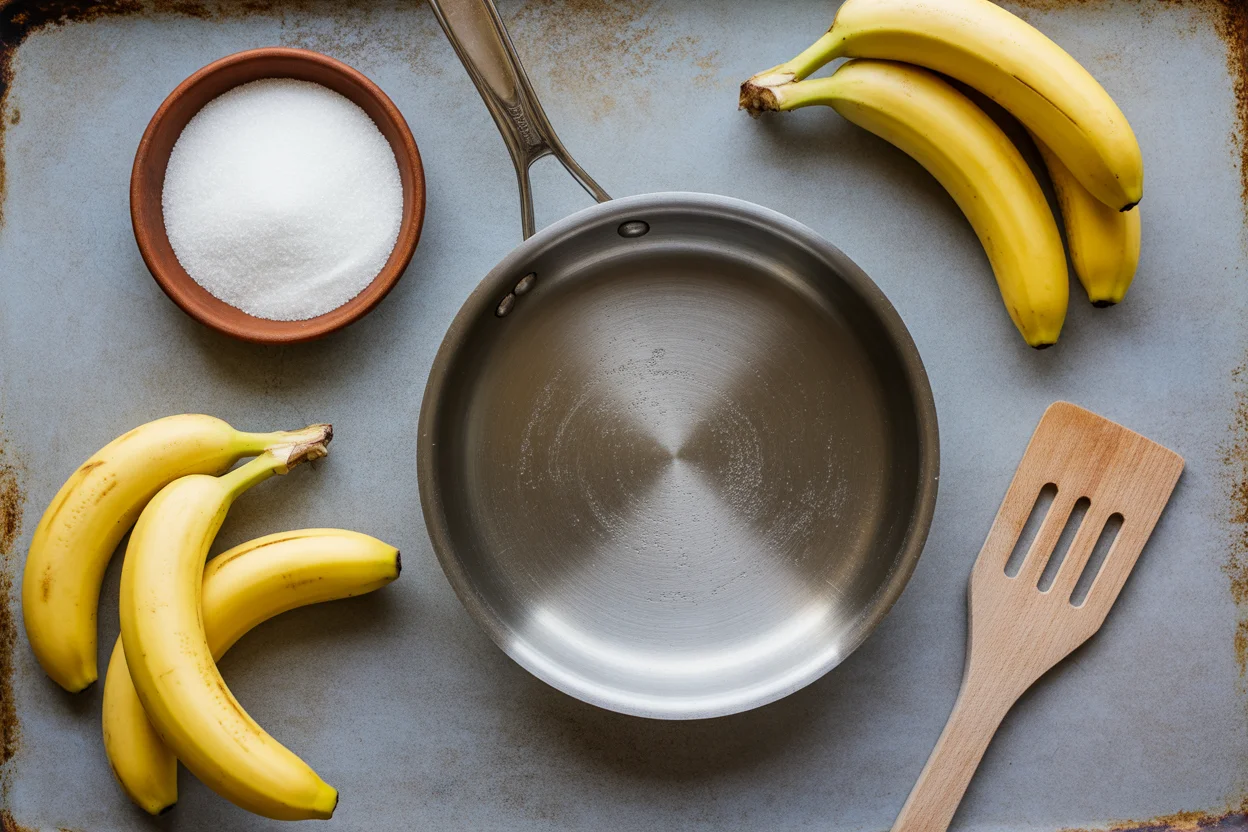
Variations of Banana Cue
Okay, here’s where things get fun. Banana cue is like jeans. Good on its own but super easy to remix. You can swap in different types of sugar. Muscovado? Oh, yes—that’ll make it even deeper and richer. Some cooks add a little pinch of salt to balance everything out. (Seriously, try it. Life-changing.)
Another twist? Splash in some vanilla right as you finish frying or dust with cinnamon if you’re feeling adventurous. I’ve even seen banana cue served with a drizzle of condensed milk. Is it traditional? Not really. Does anyone complain? Nope.
There’s a cousin to banana cue called turon, which is basically bananas and jackfruit wrapped up in a crispy lumpia shell. More crunch, more sweet, and honestly just as addictive. If you’re curious about that, definitely peep the Filipino turon recipe—worth it for another weekend treat.
Some vendors nowadays get creative by using ube jam or coconut flakes. Regional takes are popping up, too! If you ask me, though, nothing beats classic banana cue fresh off the street.
Nutritional Information
I’ll be real—banana cue is not a health food. It is a sweet treat, and, hey, sometimes you need one. But it’s not all bad either. Saba bananas are a good source of fiber and potassium. You get some vitamins, but definitely some sugar, too.
A stick of banana cue usually lands somewhere between 180 and 250 calories, give or take. A bunch of carbs, a bit of protein, and yes, plenty of quick energy if you need an afternoon pick-me-up. If you use less sugar or fry with coconut oil, you can bend it a bit healthier, but you know what? Snacks are for joy, not guilt.
Honestly, compared to processed snacks, at least you know every ingredient. I asked my cousin once if she ever counted calories eating banana cue—she laughed for two solid minutes.
;
Cultural Significance of Banana Cue
Banana cue isn’t just about filling a hungry stomach. Ask just about anyone who grew up in the Philippines, and they’ll have banana cue stories. This snack is glued to Filipino street food culture. Sidewalks buzz with vendors frying these up for merienda—basically, afternoon snack time. University students live on them. Office workers grab a stick for the commute. Little kids beg their lola for one outside the sari-sari store.
There’s something almost ceremonial in hearing that caramel sizzle and catching the smell down the block. Parties, town fiestas, or even boring afternoons, banana cue has been the unofficial food mascot of togetherness. It’s affordable, filling, and nostalgia-packed.
If you ever want to bring some Filipino swagger to your next potluck, show up with a tray of banana cue. Watch people light up with memories, and maybe they’ll share some stories of their own. Curious about other classic snacks? Pancit Habhab is another fun street food to check out.
Common Questions
What’s the best banana for banana cue?
Always go for saba bananas. They fry up fluffy inside but don’t fall apart. Regular bananas get mushy real fast.
How do you keep the sugar from burning?
Lower the heat just a smidge before you toss in the sugar. Keep stirring. Brown sugar should melt and stick, not smoke up your kitchen.
Can I reheat banana cue later?
Absolutely, but use an oven or toaster, not the microwave. You want the caramel shell to crisp up—not turn to rubber.
Can I make banana cue without deep-frying?
Sure! You could pan-fry with less oil. Won’t get the same street food crisp but still hits the spot.
How can I serve banana cue at parties?
Try these ideas:
- Skewer smaller pieces for bite-sized “banana pops.”
- Pair with a drizzle of condensed milk for a sweet punch.
- Serve alongside Filipino Pork BBQ for a fun sweet and savory combo.
- Plate with Pancit Habhab for a real festive spread.
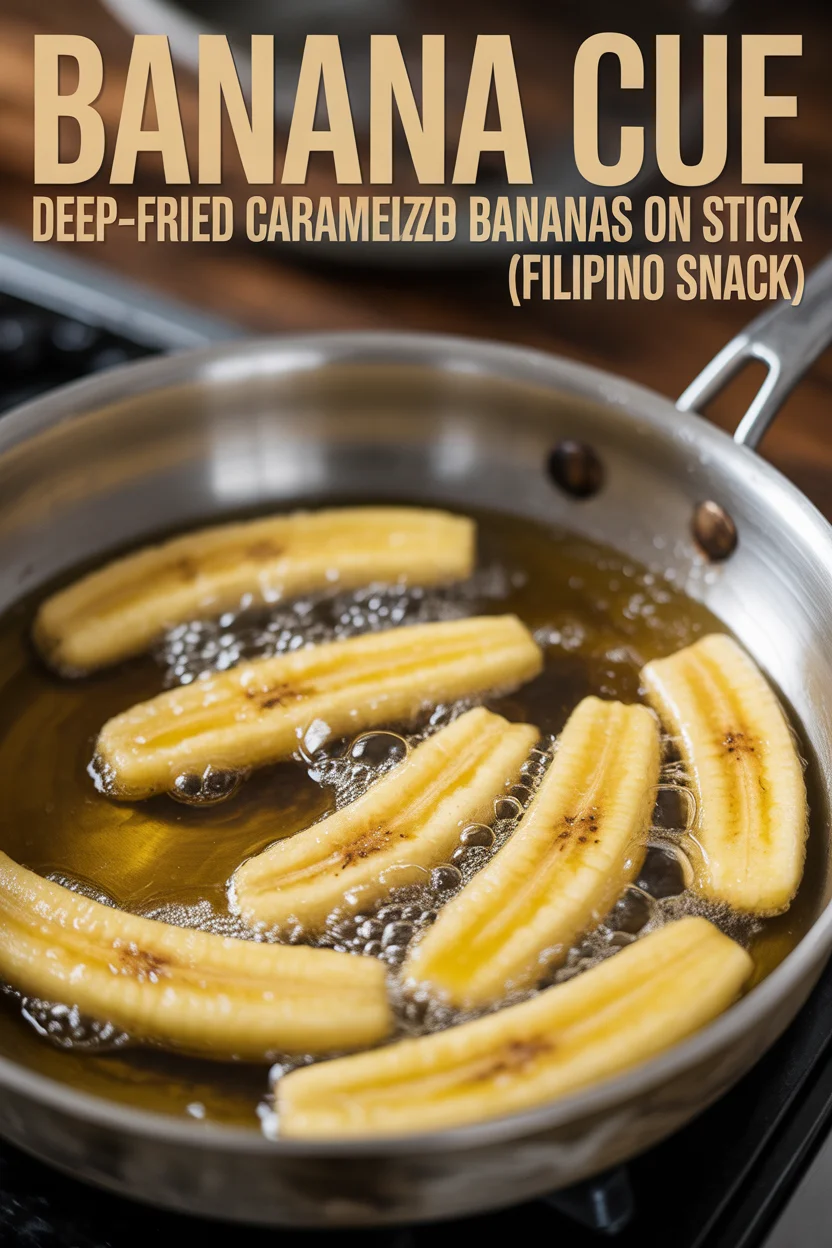
Thinking of making banana cue yourself or sharing the love? There’s lots more to learn and tweak. For even more flavor options or a visual guide, you can jump over to this Banana Cue Recipe – Pinch of Yum. Someone in your kitchen (or at your party) is bound to thank you. If you want a full nostalgic meal, consider pairing it up with Filipino Pork BBQ With Banana Ketchup Glaze or Pancit Habhab Lucban Noodles Served on Banana Leaves for the ultimate feast.
Banana Cue
Ingredients
Main Ingredients
- 5 pieces ripe saba bananas Choose firm and ripe saba bananas for best results.
- 1 cup brown sugar Darker brown sugar will add more richness.
- 2 cups cooking oil Use enough oil to cover the bananas while frying.
Instructions
Preparation
- Heat oil in a large pan or wok over medium heat until sizzling.
- Peel the saba bananas and carefully drop them into the hot oil.
- Allow the bananas to fry for a few minutes until they start to soften.
- Sprinkle the brown sugar directly into the oil to coat the bananas.
- Gently stir the bananas to ensure the sugar doesn’t burn, allowing it to caramelize.
- Once the bananas are golden brown and sticky, use tongs to remove them from the oil.
- Thread a couple of banana pieces onto bamboo sticks and allow them to cool on a tray.
